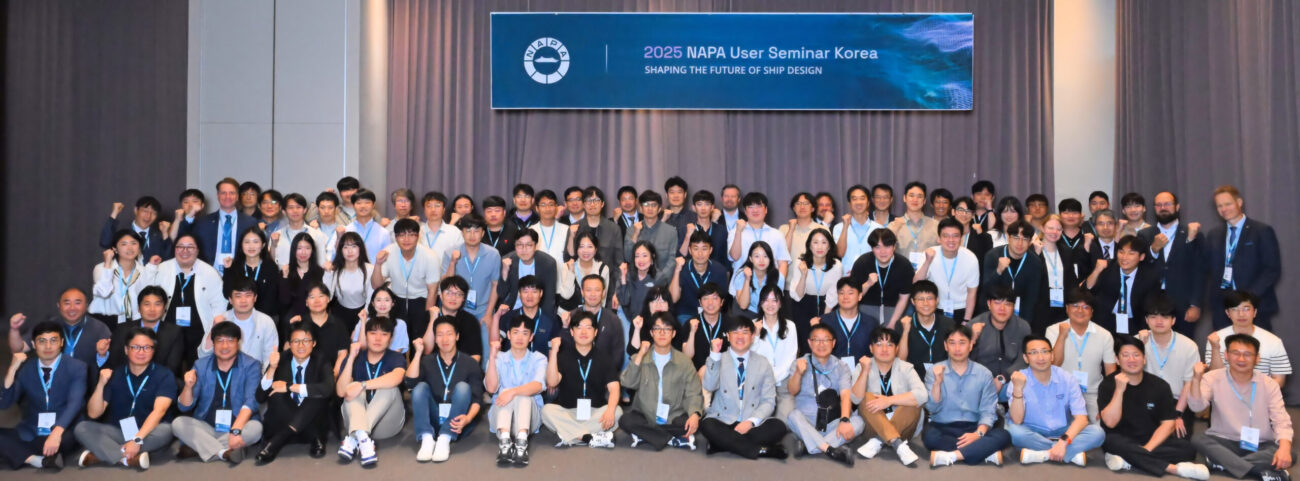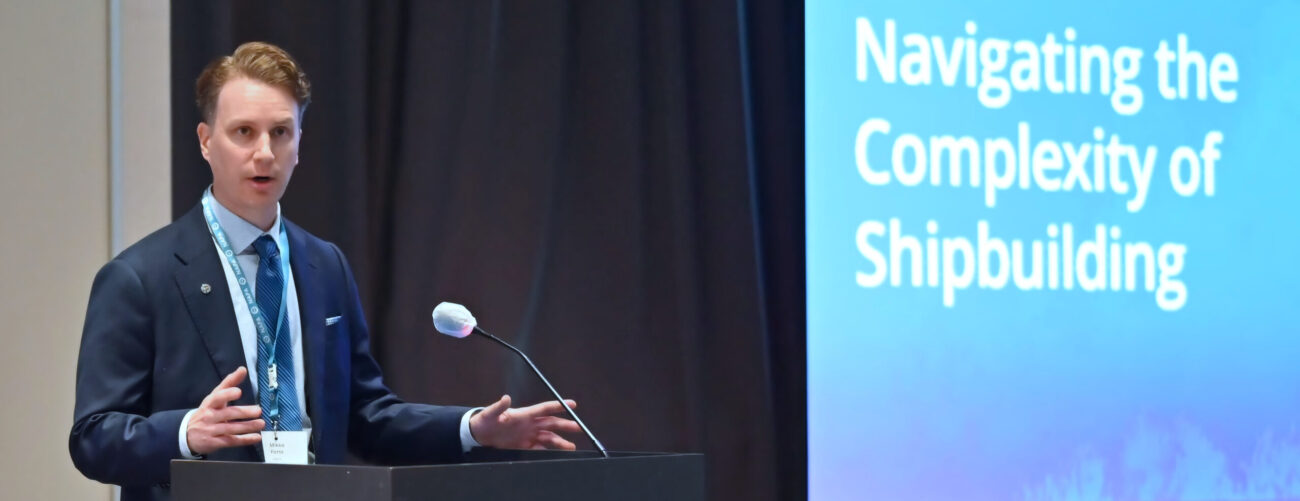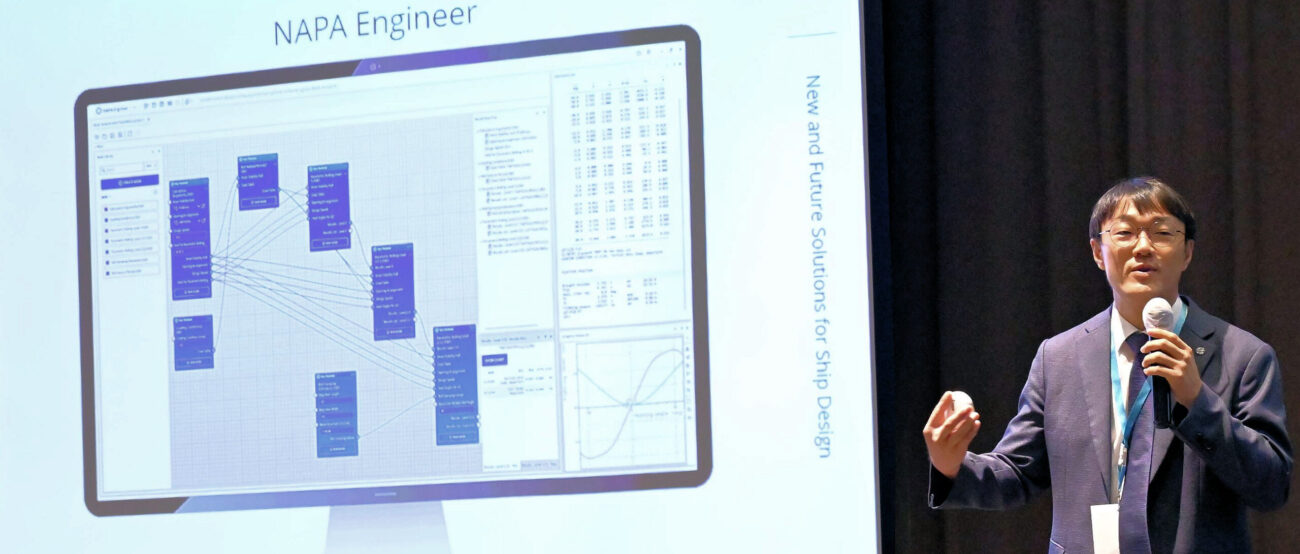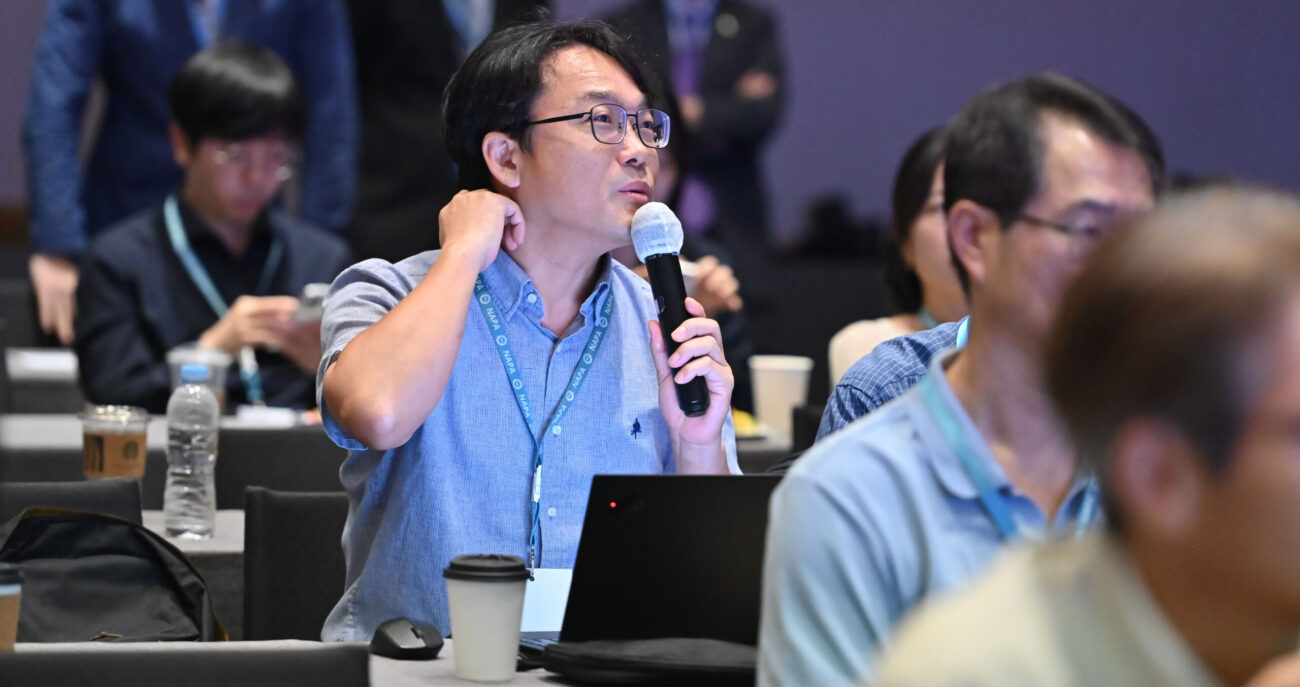October 29, 2025
Exploring the future of ship design: NAPA User Seminar Korea 2025 in review
In September 2025, the annual NAPA User Seminar Korea brought together the NAPA community in Busan to explore the latest advancements in naval architecture and ship design. Over 120 maritime professionals, ship designers and engineers attended the two-day event, under the theme “Shaping the Future of Ship Design.

The maritime industry stands at a pivotal moment, with shipowners pursuing targeted fleet renewal to meet decarbonization goals and prepare for next-generation technologies, even as broader newbuilding activity moderates. This requires ship design methods and tools to respond to the changing market demands with innovative technologies. At the NAPA User Seminar Korea 2025, we joined forces with representatives from the Korean maritime industry to explore what lies ahead for the future of ship design and continue to strengthen the decades-long collaboration between the industry stakeholders and NAPA, as a trusted software provider in South Korea.
Meeting market demands with digital ship design tools
The need for digital transformation, sustainability, and evolving regulatory demands is reshaping the very foundations of ship design. In his keynote presentation, Mikko Forss, Executive Vice President of Design Solutions at NAPA, laid out a compelling vision for the future—one where ship design becomes smarter, faster, and more collaborative.

The global shipbuilding industry entered 2025 with one of its largest order books in nearly two decades, driven by fleet renewal and decarbonization needs. Clarkson Research projects an average of just over 2,000 ships ordered annually through 2034, underscoring steady long-term demand. At the same time, shipyards are shifting toward more technically complex, tailor-made vessels as alternative-fuel and efficiency requirements grow.
NAPA is responding to these challenges with solutions that meet the special needs of the engineer-to-order nature of shipbuilding. NAPA Engineer, as a new software platform, supports clarifying the multidisciplinary and growing complexity of the modern shipbuilding processes. It enables efficient design iterations, tailored engineering workflows and integration. NAPA Steel is bridging 3D structural design and assessment, boosting the basic and detail design to a new level of efficiency.

Flexible tools to solve diverse shipbuilding needs
One of the most inspiring aspects of the NAPA User Seminar Korea 2025 was facilitating collaboration and discussion between key players of the Korean maritime industry. Guest presentations from our partners brought the spotlight to customer-led innovation and use cases. Through a series of technical presentations, leading shipyards’ classification societies demonstrated how they are leveraging NAPA’s flexible design environment to solve complex engineering challenges and streamline their workflows.
HD Hyundai Heavy Industries presented a powerful scripting solution to automate the generation of bench structures and related geometry for container ships. Hanwha Ocean introduced a framework designed to generate ready-to-use datasets for tanker stability calculations. Samsung Heavy Industries shared their use of NAPA Steel in the preliminary design of curved shell plates for offshore structures. Lloyd’s Register contributed with a presentation on the implementation of wind moment definitions, aligned with their newly released Guidance Notes on Wind Assisted Propulsion Systems (WAPS).

While each presentation addressed a distinct challenge— from container ship geometry to tanker stability, offshore shell design, and wind propulsion integration — what united them was the adaptability of NAPA’s solutions for ship design. The flexibility of NAPA is a common upside for many of its users. Whether through scripting, optimization algorithms, scripting-based automation, or integrated drafting tools, NAPA has proved to be a versatile platform that can be customized to meet the diverse needs of shipyards, classification societies, and design teams.
AI and collaboration driving the next wave of innovation
Beyond the technical presentations and product showcases, the NAPA’s annual User Seminar serves as a unique platform for collaboration and dialogue across the maritime industry. Bringing together professionals from different fields of the industry, the event fosters an open exchange of ideas that is essential for driving innovation in ship design. As one of this year’s attendees put it:
“I have attended the NAPA User Seminar Korea five times already, and I really enjoy it every year. This is a very rare opportunity for me to meet and share insights with other industry professionals. Meeting NAPA’s representatives and other NAPA users also helps me to use NAPA more efficiently in my everyday work.”
Discussions this year were on the future of naval architecture, digital workflows, and regulatory compliance. One of the most talked-about topics was the role of artificial intelligence in maritime design and operations. From automating complex calculations, AI-assisted scripting, and macro creation to enhancing decision-making with predictive insights, AI is increasingly seen as a transformative force in the industry.
These conversations underscored a shared vision: that AI should not only enhance productivity but also make advanced design tools more accessible and intuitive. At NAPA, we are committed to being at the forefront of the future of ship design, where AI will play a key role in the evolution of our solutions, helping users work smarter, faster, and with greater confidence.